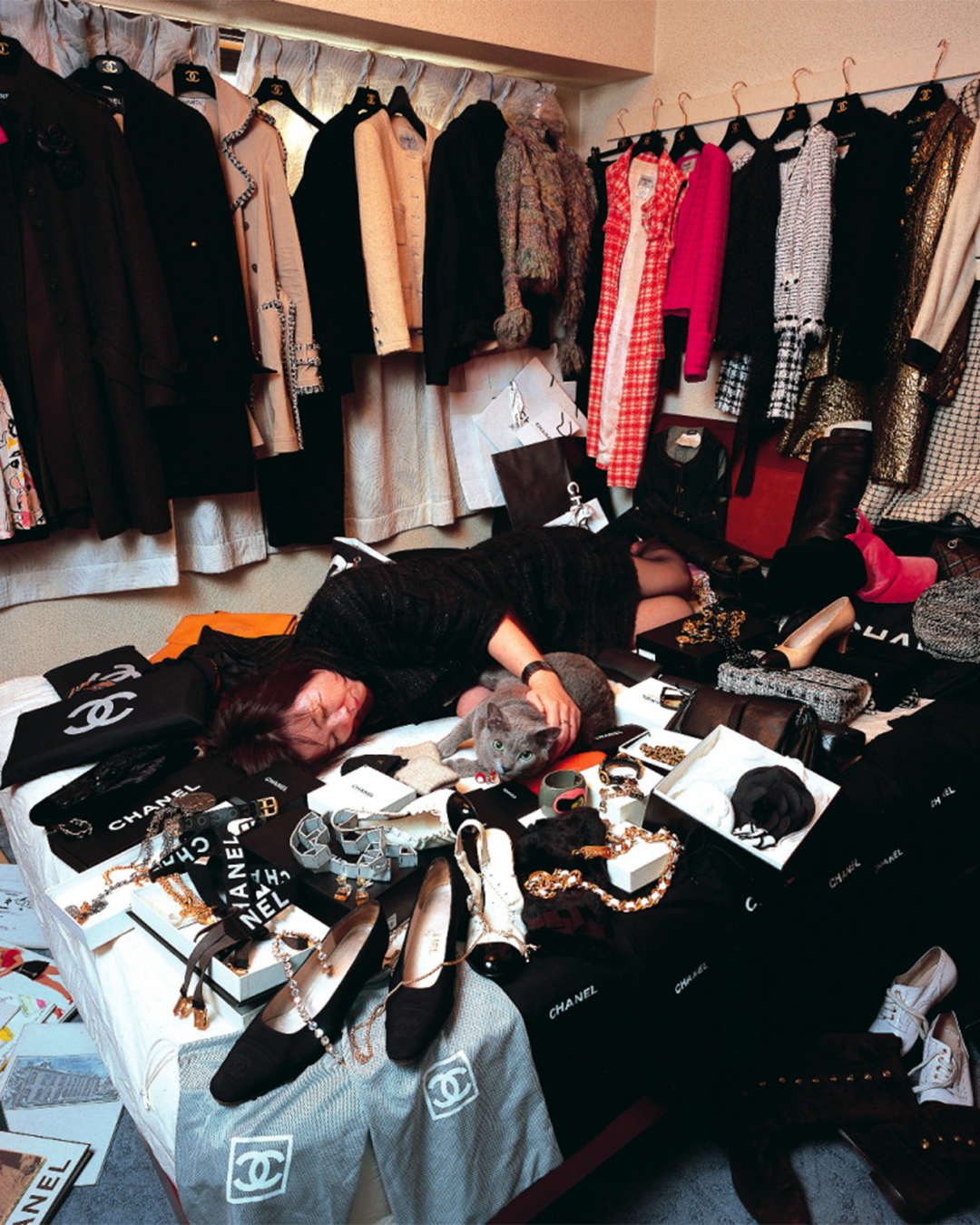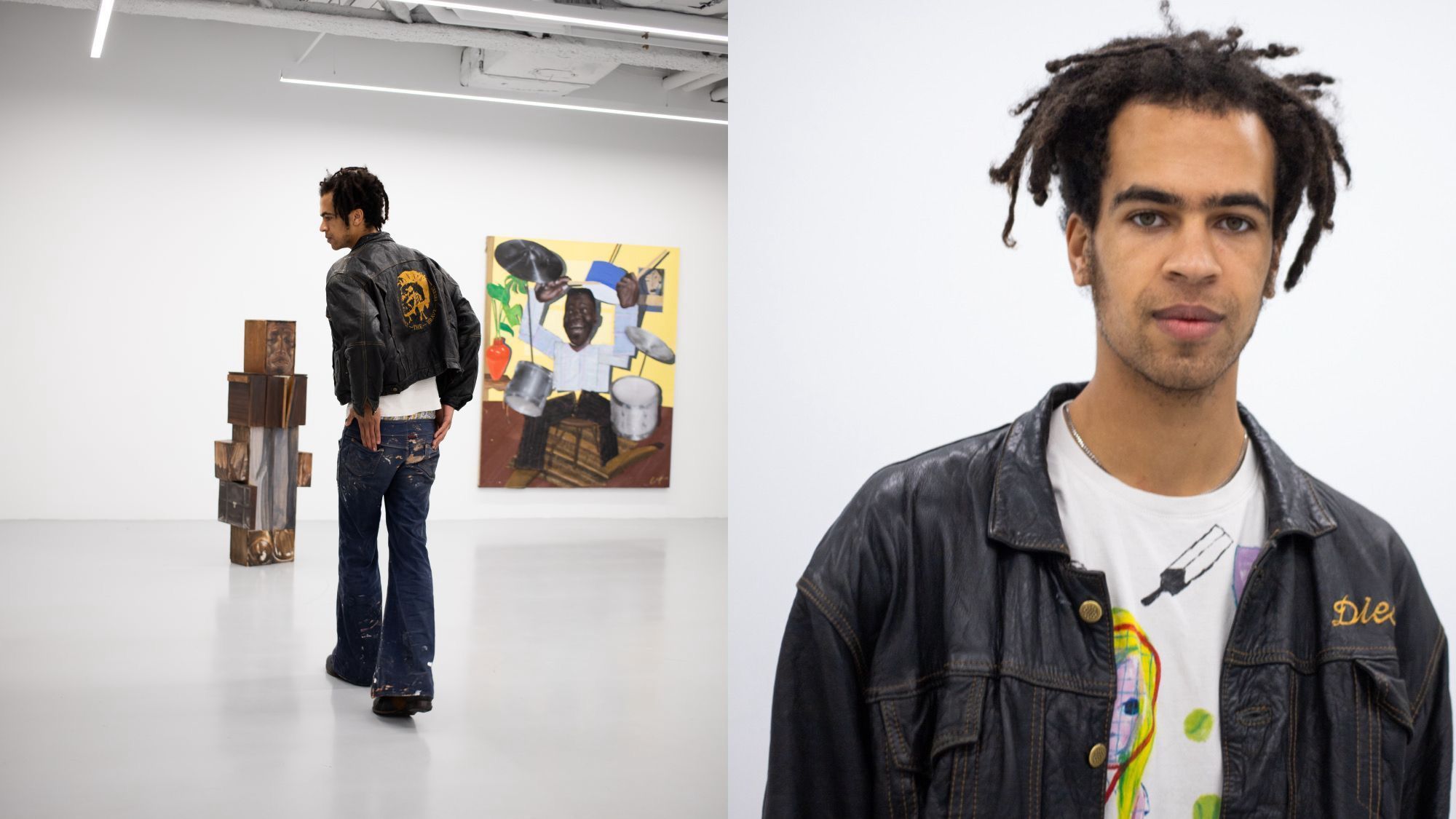
«High fashion often creates a fantasy to make consumers feel inferior», interview with Kyoichi Tsuzuki The viral phenomenon of Happy Victims after 15 years
From 1999 to 2004, Japanese photographer Kyoichi Tsuzuki visited thirty tiny apartments across Tokyo, capturing their owners surrounded by their extensive personal fashion archives. The book Happy Victims, published in 2008, remains consistently relevant thanks to social media, where photos from the work regularly gather thousands of likes. The photo book, comprising 85 images, captures the juxtaposition between the chaos of these enthusiasts' collections and the extreme minimalism of the apartments they lived in—spaces often bare, undecorated, almost clinical, yet overflowing with fashion.
After 15 years, this book continues to resurface from the corners of the web and garner relevance on social media. Why? According to Tsuzuki himself: «If there are still people who like ‘fashion victims,’ I think it’s because fashion journalism, even after 15 years, still hasn’t turned its attention to reality. The project was a series of serialized stories for the magazine Fashion News, one of the most popular high-fashion publications in Japan at the time.» Reflecting on the reactions to the project, particularly those from the luxury world, the photographer recalls how he initially thought brands would welcome the work enthusiastically. Instead, surprisingly, the response was negative: «I realized then that brands wanted to hide the true consumers because they didn’t fit the image they wanted to project.»
@offbrandlibrary Happy Victims - Kyoichi Tsuzuki (2008)
100 - Dean Blunt
In many of his works, Kyoichi Tsuzuki represents ordinary, mundane slices of life. One of the most intriguing and captivating aspects of Happy Victims is its demystification of fashion, which at the time was deeply intertwined with glamour. «After spending a long time looking at fashion media, I realized that high fashion often creates an idealized image, a kind of fantasy, that makes readers feel impatient or inferior, thereby fueling the cycle of consumption. The driving force behind this project was the desire to show as many people as possible that ‘these are the people actually wearing it’, rather than projecting the message: ‘we (the brands) want these people to wear it'.»
Happy Victims, in essence, is a critique of capitalism and consumerism, but it also offers a glimpse into fashion fanaticism, reinforcing the imagery of Japanese subcultures of that era. After all, even Nana — the cult anime and manga of the early 2000s — depicted a youth willing to live in tiny, modest apartments on Tokyo's outskirts to own a wardrobe full of Vivienne Westwood.
happy victims (1999-2004) by kyoichi tsuzuki, captures portraits of individuals and their brand obsession.
— Jenesse (@jenesse) October 31, 2021
tom ford
libertine
martin margiela
baby, the stars shine bright pic.twitter.com/MTgaMoD0ri
Despite the passage of time, the book continues to capture the attention of the younger generations. It evokes nostalgia for a time and place that many never experienced, an imagery distant from the reality of most readers and social media users who consistently make this work go viral. This distance is not only geographic but also cultural: in 2024, it’s nearly unthinkable for a young fashion victim to build such an extensive archive of their favorite brand. For this reason, the photographer himself admitted that he would likely not revisit the project: «After the book was published, I did some follow-up shoots, but it might be difficult to restart that project in this day and age. This is because, while twenty years ago, luxury and streetwear were clearly distinct expressions, today the ‘mystique’ of high fashion seems to have disappeared, becoming more aligned with subcultures. I think the sense of aspiration that once existed, simply because of the high price, is vanishing from contemporary high fashion.»
Happy Victims represents an alternative world, in a luxury landscape where younger generations can at most afford window-shopping due to prohibitive prices. It is a perfect reality where a twenty-something can be happily surrounded by five racks of archival Margiela, even while living in a tiny apartment.












































